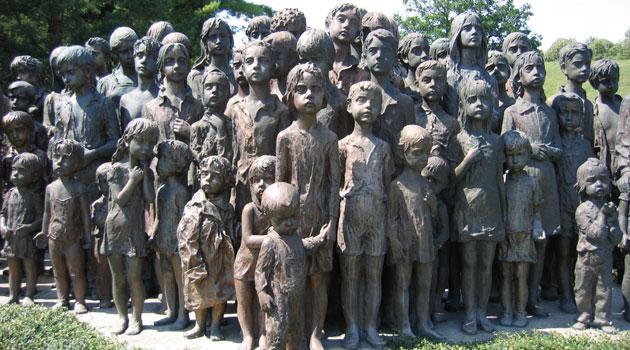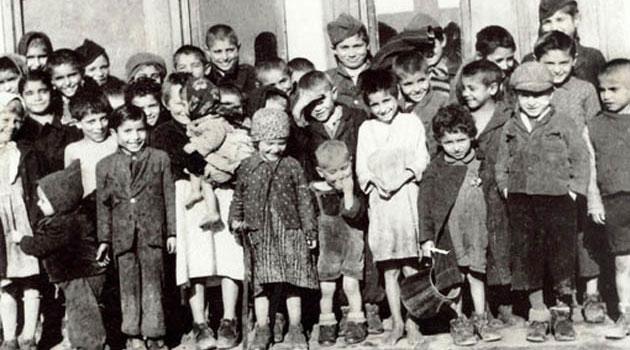Czech Republic: Lidice Memorial has a new director, Čeněk Růžička hopes she will be more sensitive about honoring the Roma genocide at Lety than her predecessor

The Lidice Memorial, which commemorates the Nazi massacre of the village of Lidice in 1942, has been led since 1 April by Marina Lehmannová. She was chosen by the Czech Culture Ministry, the establisher of the memorial.
Lehmannová replaces Milouš Červencl, who retired in December 2016; management of the memorial was entrusted to Deputy Director Jaroslav Tauber in the interim. Lehmannová was chosen in a second round of selection procedures, as the hiring commission did not choose anybody from the first round.
Simona Cigánková, spokesperson for the Czech Culture Ministry, informed the Czech News Agency of the hire on 29 March. Lehmannová is a graduate of the Faculty of Arts at Masaryk University in Brno and has worked at the Moravian Gallery in Brno and at the Decorative Art Museum in Prague.
She is the author of both academic and popular publications about art and history. She says she was inspired to apply for the job because of the significance of the memorial and primarily because it is an important component of the cultural heritage of the Czech Republic.
“I would like to do more to commemorate the significance of what Lidice means not just for the territory of the Czech Republic, but actually internationally,” the new director told the Czech News Agency. The main visiting season at the memorial begins at the end of March, and this year the main exhibition and the gallery at Lidice will feature a new part of the exhibition in the original building.
The new material discusses the development of Lidice during the second half of the 20th century, and not just architectonically. “This represents human resilience, that actually no matter what happens, including any kind of tragedy, humanity always finds the strength to overcome negative things,” the new director said of the exhibition.
Lehmannová has gradually become more and more familiar with the professional activity of the Lidice Memorial since 2004 as part of her participation with other professional entities, including her position as a member of the International Council of Museums (ICOM), for which she has chaired ICOM Czech Republic since 2015. Prior to her even beginning to consider applying for the job as director of the Lidice Memorial, she prepared an international conference for ICOM Czech Republic called “Presumption to Responsibility. Museums and contested history. Saying the unspeakable in museums.” about museums and the tragic history of the 20th century, which will take place this November in Brno.
Speakers from Germany, Poland, Slovakia and other countries will present at that event. Now Lehmannová is adminisering the Lidice Memorial which commemorates the Nazi massacre at Lidice on 10 June 1942.
The pretext for the Nazi murders at Lidice was an imagined connection between the village and the assassination of Reichsprotektor Reinhard Heydrich, and of its 500 inhabitants, just 160 survived the war. A total of 173 men from Lidice were shot dead there on 10 June 1942, while another 26 residents of Lidice were shot dead on 16 June 1942 in the Kobylisy district of Prague.
There were 53 women from Lidice who were sent by the Nazis to concentration camps and did not survive. The Nazis sent 82 children from Lidice to the Chelmno extermination camp, where they were suffocated in gas vans.
After the liberation of Czechoslovakia, 17 children and 143 women originally from Lidice gradually returned home. The area of the village was declared a cultural memorial in 1962, and 33 years later was declared a national cultural monument by Czech Government decree.
The state-funded Lidice Memorial organization has been in operation since 2001. Since 2009 the remembrance site of the former concentration camp for Romani people at Lety u Písku has been under the administration of the Lidice Memorial also.
That location is infamous because of the so-far futile fight by activists and Romani Holocaust survivors to remove an industrial pig farm which has been situated since the 1950s on the place where the concentration camp once stood. The chair of the Committee for the Redress of the Roma Holocaust, Čeněk Růžička, told news server Romea.cz that he hopes the new director at Lidice will be more discerning and sensitive than her predecessor was.
“I would like to remind us especially of the fact that Czech guards worked at Lety and that it was Czechs who murdered our people there back then,” Růžička told Romea.cz. Last year the Lidice Memorial itself enjoyed record-high visiting numbers of about 100 000 people.
In addition to taking care of the reverent area at Lety, the state-funded Lidice Memorial also takes care of the reverent area at Ležáky, which was also razed to the ground in reprisal for the assassination of Heydrich and now commemorates Nazi despotism. The new director said she also wants to draw more attention to the Ležáky Memorial, including through installing updated historical and visual reflections on the location and recalling the architects who contributed to rebuilding both Ležáky and Lidice.
